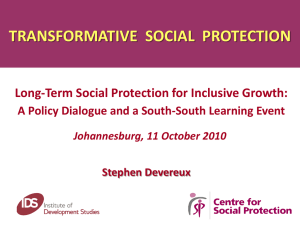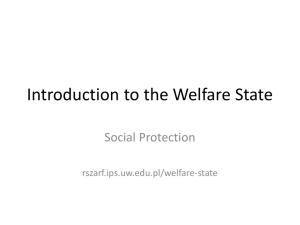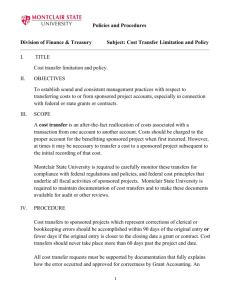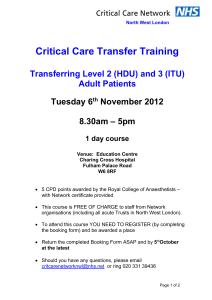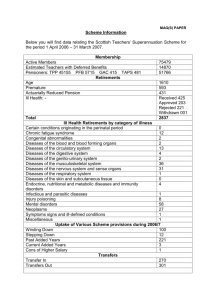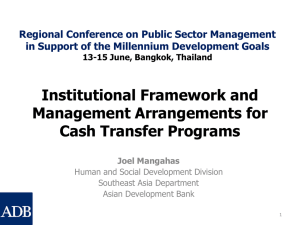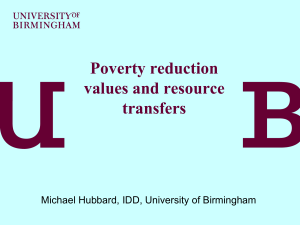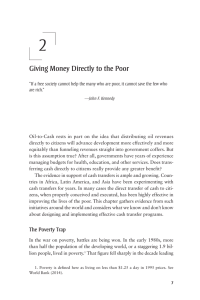Rights-based approach
advertisement
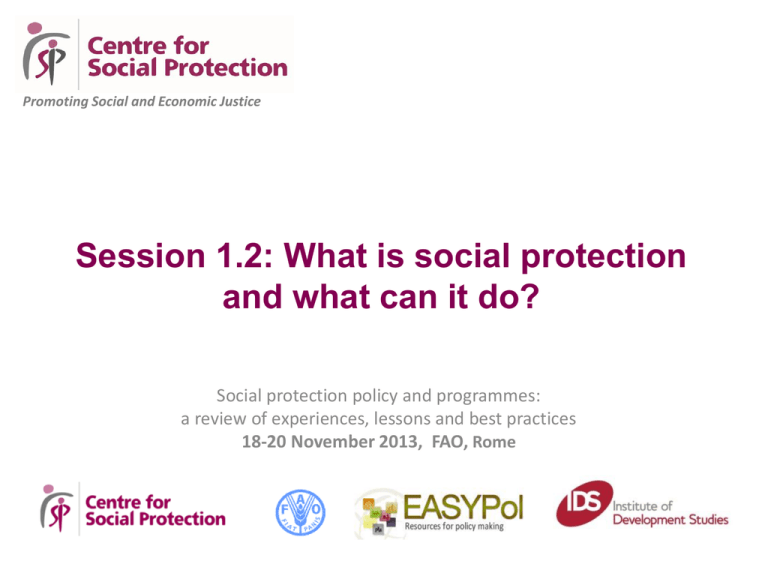
Promoting Social and Economic Justice Session 1.2: What is social protection and what can it do? Social protection policy and programmes: a review of experiences, lessons and best practices 18-20 November 2013, FAO, Rome Definitions and approaches Conceptual approaches: - Social protection as a response to vulnerabilities throughout the life-cycle. - Social protection as a tool for reaching different objectives in relation to poverty. Operational approach: - Social protection as a set of policies and instruments. Rights-based approach: - Social protection as a basic human right. Life-cycle approach: a vulnerability-led definition “Social protection is a set of transfers and services that help individuals and households confront risk and adversity (including emergencies) and ensure a minimum standard of dignity and well–being throughout the life–cycle.” UNICEF 2006 Life-cycle approach infants free primary health care school-age children free school feeding elderly old age pension adolescents scholarships and skills training working-age adults pregnant and lactating women unemployment benefits input subsidies free MCH services Evidence Positive anthropometric impacts from quantitative evaluations. Colombia: 12-month-old boys on CCT grew 0.44cm more. Mexico: children gained 1cm in height-for-age after 2 years. South Africa: Boys receiving Child Support Grant will be 3.5cm taller as adults. Colombia Familias en Accion Mexico Oportunidades South Africa Child Support Grant Objectives-led approach: a functional definition “Social protection describes all initiatives that: 1. provide cash or food transfers to the poor; 2. protect the vulnerable against livelihood risks; and 3. enhance the social status and rights of the excluded and marginalised.” Institute of Development Studies 2004 Objectives-led approach Transformative social protection Promotion Livelihood promotion: Linkages to graduate the poor out of poverty (e.g. credit schemes, public works). Prevention Social insurance: Security against life– cycle events and livelihood risks or shocks (e.g. unemployment insurance) Protection Social assistance: Income transfers (cash) or consumption transfers (food or vouchers or subsidies) to the poor Transformation Social justice: Address structural drivers of poverty and vulnerability with policies of social inclusion Promotion Livelihood promotion: Linkages to graduate the poor out of poverty (e.g. school feeding, public works). Prevention Social insurance: Security against economic vulnerability (e.g. life–cycle events and livelihood risks or shocks) Protection Social assistance: Income transfers (cash) or consumption transfers (food or vouchers or subsidies) to the poor Evidence Operational approach: an instruments-led definition “The proposed definition of social protection contains [...]: (i) Labor market policies and programs designed to facilitate employment and promote the efficient operation of labor markets; (ii) Social insurance programs to cushion the risks associated unemployment, health, disability, work injury, and old age; (iii) Social assistance and welfare service programs to provide subsistence to the most vulnerable groups with no other means of adequate support.” ADB 2001 Operational approach: an instruments-led definition 1) Social assistance for the poor: Alleviating chronic poverty with social grants (cash/food transfers; child grants etc.) 2) Social insurance for the vulnerable “Insuring the uninsured” against: (1) adverse personal circumstances (e.g. health insurance, income protection); (2) life–cycle hazards (e.g. old age pensions); (3) livelihood risks (e.g. crop insurance) 3) Labour market policies Facilitate employment and promote livelihoods (public works, credit schemes) Ensuring basic standards at work and extends rights (maternity rights, minimum wage legislation) Rights-based approach: a rights-led definition “Everyone has the right to a standard of living adequate for the health and well-being of himself and of his family, including food, clothing, housing and medical care and necessary social services, and the right to security in the event of unemployment, sickness, disability, widowhood, old age or other lack of livelihood in circumstances beyond his control.” Universal Declaration of Human Rights 1948 Rights-based approach: a rights-led definition Social Protection Floor Four “essential guarantees” through the life–cycle: 1. All residents have access to essential health care services. 2. All children have income security, through transfers in cash or kind, to access nutrition, education and care. 3. All those in active age groups who cannot earn sufficient income on the labour markets should enjoy minimum income security through social assistance transfers. 4. All residents in old age and with disabilities have income security through pensions or transfers in kind. Rights-based approach: a rights-led definition Social protection floor Private insurance Social insurance Social assistance Lessons learned “There is convincing evidence from a number of countries that cash transfers can reduce inequality and the depth or severity of poverty.” “There is robust evidence from numerous countries that cash transfers have leveraged sizeable gains in access to health and education services.” DFID (2012) “All the evidence is that spend grant money wisely and that grants do not encourage people to be lazy or work-shy.” Hanlon, Barrientos and Hulme (2010)

